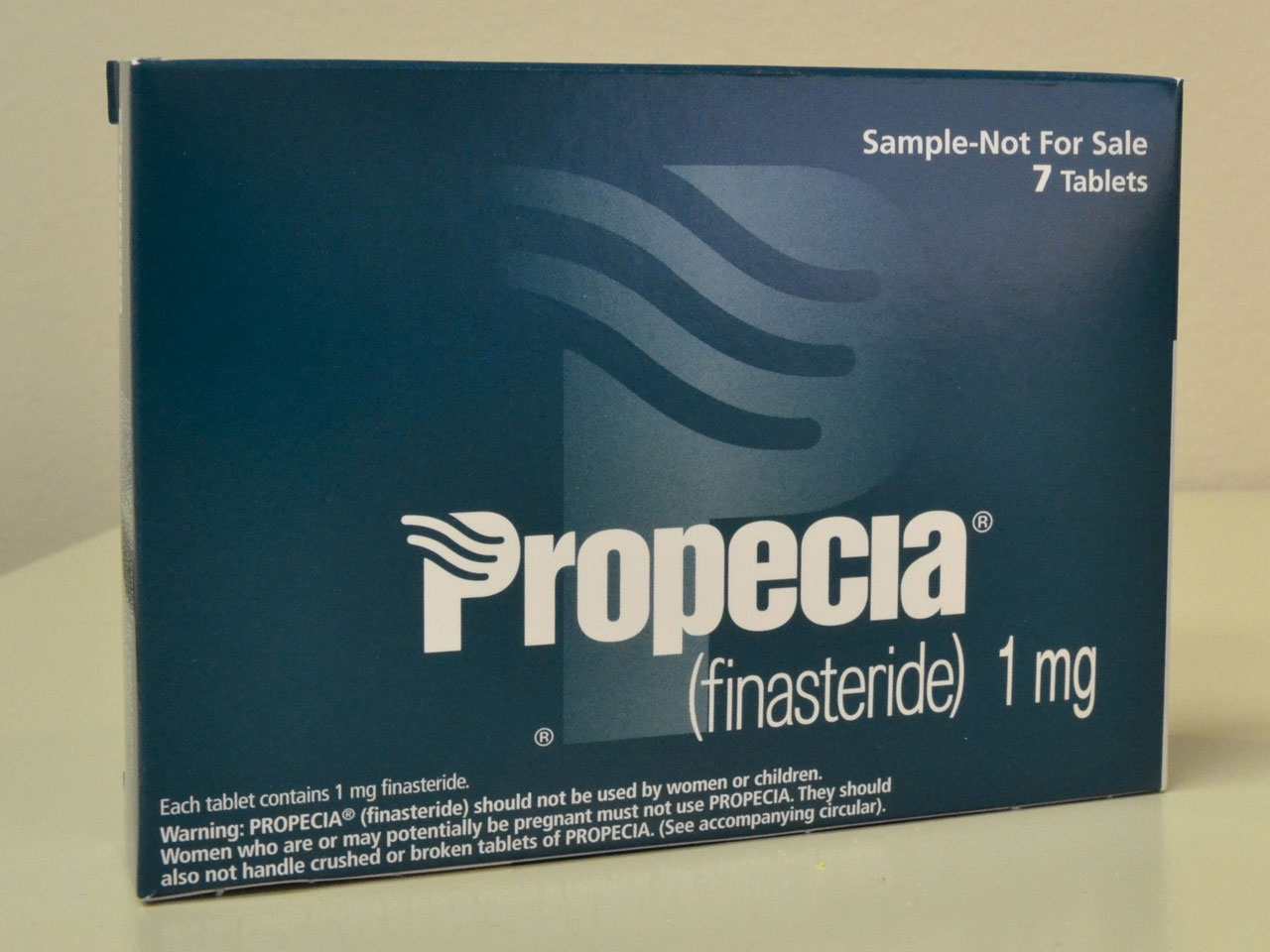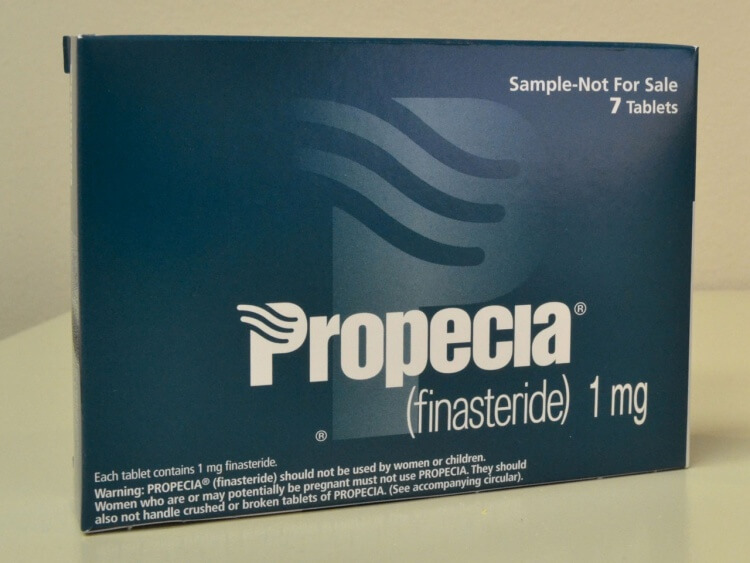
Propecia (finasteride) is used to treat male pattern baldness (androgenic alopecia) in men. [Finasteride is also used in combination with doxazosin in the treatment of benign prostatic hyperplasia (BPH) in a version marketed as Proscar.] Finasteride is an orally active testosterone Type II 5-alpha reductase inhibitor, inhibiting the enzyme that converts testosterone to dihydrotestosterone (DHT). Topically (on the scalp itself) it is of some effect in minimizing further hair loss. In combination with Nizoral and spironolactone (which smells awful, by the way), it can actually reverse loss moderately.
Oral use of it though will reduce DHT levels systemically, which may adversely affect training and sex drive.
For use in cycles with testosterone, I don’t think it is bad at all. One simply doesn’t want less DHT than normal. As the amount of testosterone in the system increases, the amount of finasteride needed to keep levels down to normal increases. I consider 5 mg/day reasonable at the gram per week level, and proportionally less at lower dosages of testosterone. Proscar comes in 5-milligram pills and is considerably less expensive than the 1-milligram Propecia pills.
I personally wouldn’t use more than the recommended pharmaceutical dosage, or 5 mg/day. More might not be safe and might at some point cause DHT levels to become abnormally low.
Finasteride is the chemical name of active ingredient in Proscar and Propecia. Proscar and Propecia are registered trademarks of Merck & Co. Inc. in the United States and/or other countries.

About the author
Bill Roberts is an internationally-recognized expert on anabolic steroids and performance-enhancing drugs (PEDs). He received a bachelor degree in Microbiology and Cell Science and completed the educational and research requirements for a PhD in Medicinal Chemistry at a major American university.
Bill entered the nutritional supplement industry prior to completing his doctoral thesis but his education was invaluable so far as being able to design/improve nutritional supplement compounds, since it was in the field of designing drug molecules and secondarily some work in transdermal delivery.
His education was not specifically "geared" toward anabolic steroids other than expertise with pharmacological principles having broad applications. This has allowed Bill to provide unique insight into the field of anabolic pharmacology with knowledge of points which he would not have known otherwise.